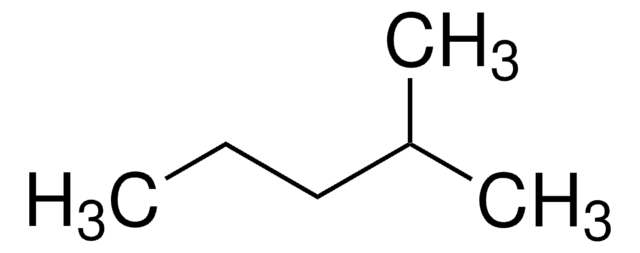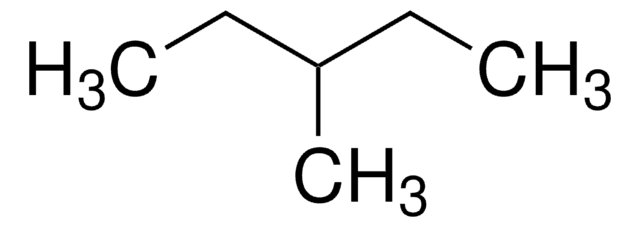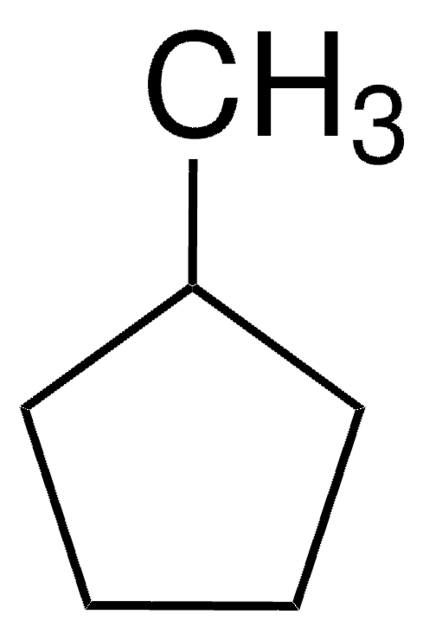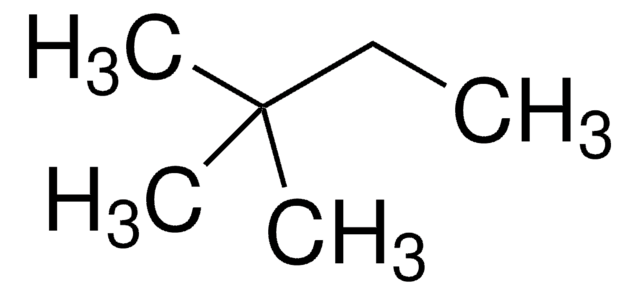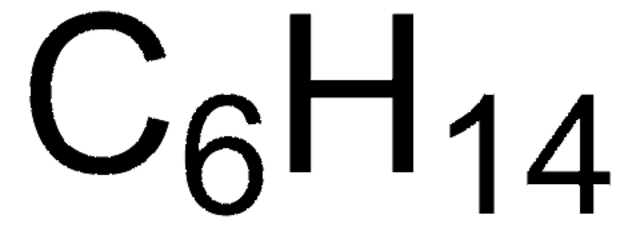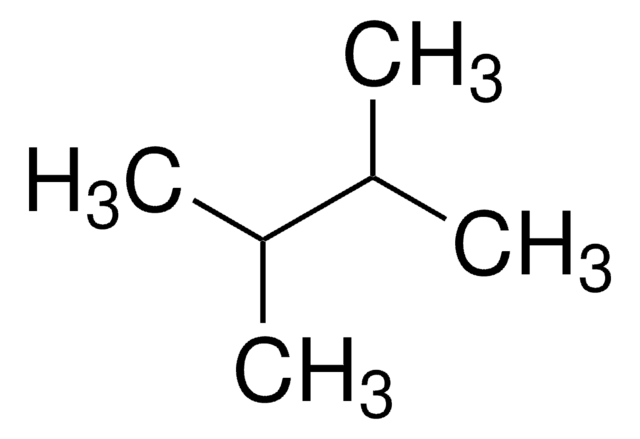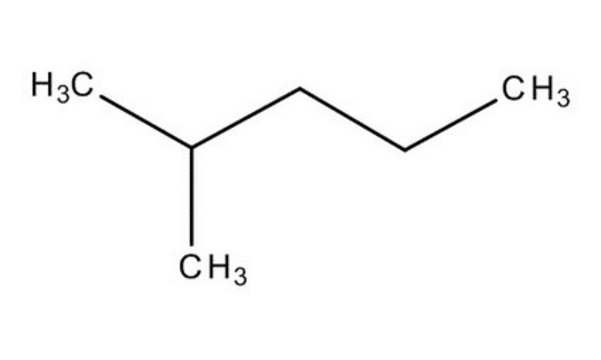68310
2-Methylpentane
≥99.5% (GC), analytical standard, suitable for gas chromatography (GC) and HPLC
Synonym(s):
‘Isohexane’
About This Item
Recommended Products
Product Name
2-Methylpentane, analytical standard
grade
analytical standard
Quality Level
vapor density
3 (vs air)
vapor pressure
6.77 psi ( 37.7 °C)
Assay
≥99.5% (GC)
autoignition temp.
583 °F
shelf life
limited shelf life, expiry date on the label
expl. lim.
7 %
technique(s)
HPLC: suitable
gas chromatography (GC): suitable
refractive index
n20/D 1.371 (lit.)
n20/D 1.371
bp
62 °C (lit.)
mp
−154 °C (lit.)
density
0.653 g/mL at 25 °C (lit.)
application(s)
petroleum
format
neat
SMILES string
CCCC(C)C
InChI
1S/C6H14/c1-4-5-6(2)3/h6H,4-5H2,1-3H3
InChI key
AFABGHUZZDYHJO-UHFFFAOYSA-N
Looking for similar products? Visit Product Comparison Guide
General description
Application
Recommended products
Signal Word
Danger
Hazard Statements
Precautionary Statements
Hazard Classifications
Aquatic Chronic 2 - Asp. Tox. 1 - Flam. Liq. 2 - Skin Irrit. 2 - STOT SE 3
Target Organs
Central nervous system
Storage Class Code
3 - Flammable liquids
WGK
WGK 2
Flash Point(F)
19.4 °F - closed cup
Flash Point(C)
-7 °C - closed cup
Regulatory Information
Choose from one of the most recent versions:
Already Own This Product?
Find documentation for the products that you have recently purchased in the Document Library.
Our team of scientists has experience in all areas of research including Life Science, Material Science, Chemical Synthesis, Chromatography, Analytical and many others.
Contact Technical Service